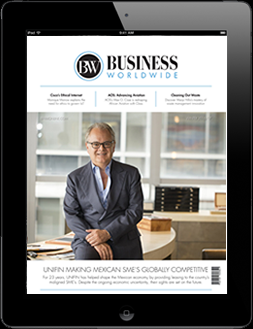79 percent of investors plan to increase their foreign direct investment in the next three years, according to the 2018 Foreign Direct Investment (FDI) Confidence Index® from global strategy and management consulting firm A.T. Kearney. This is a four percentage point increase on last year’s results, highlighting the continued bullishness of investors amidst geopolitical turmoil and economic expansion. In fact, investors signal greater confidence in the global economy, with 66 percent more optimistic about the global economic outlook than they were last year.
Despite such optimism, this year’s edition of the Index, entitled Investing in a Localized World, finds that investors are also increasingly bracing themselves for economic disruption by adopting strategies to mitigate the effects of protectionism on their business operations. 89 percent of investors report that their company is pursuing or considering implementing localization practices. Government regulations play a key role in these decisions. More than one-third of investors indicate that their decision to localize is driven by market access restrictions while 27 percent report that their localization decisions are driven by protectionist trade policies. Localization strategies are causing investors to increase their FDI, as they develop new supply chains, products, and workforces for specific local contexts.
“Investors appear to have recognized that the heady days of globalization are no more,” says Paul A. Laudicina, founder of the FDI Confidence Index and chairman of A.T. Kearney’s Global Business Policy Council. “In an increasingly islandized world, global companies recognize that it is important to build local connections to ensure continued market access.”
But localization does not come without costs. For instance, 60 percent of investors report that if the North American Free Trade Agreement (NAFTA) were terminated, their company’s operating costs would increase.
In this localizing world, developed markets dominate in terms of investment intentions, accounting for 84 percent of the positions in this year’s Index. The United States remains in the top spot of the Index for the sixth year in a row. Almost all developed markets in Asia rise in the rankings. And European developed markets performed strongly, accounting for more than half of all positions on the Index.
“Europe’s strong showing in this year’s Index is a sign that—10 years after the onset of the global financial crisis—the European economy has finally turned the corner and is poised for greater growth,” says Erik Peterson, managing director of the Global Business Policy Council and co-author of the study.
Emerging markets such as China and India fell in this year’s Index, but remain among the top investment destinations overall due to their sheer market size and rapid economic growth. Their fall may be better explained by investor preference for regulatory transparency and concern about political instability than any significant change in their overall fundamentals.
Investors also perceive the possibility of political instability in an emerging market as more likely to occur this year than last year. And for the fourth year in a row, investors identify increasing geopolitical tensions as the wild card that is most likely to occur this year.
















